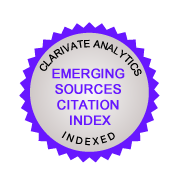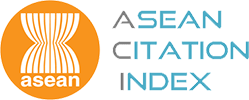REGIONAL DEMOCRATIZATION: A COMPARATIVE ANALYSIS OF EU AND US EFFORTS IN CENTRAL ASIA AND SOUTHEAST ASIA
DOI:
https://doi.org/10.32890/%20jis2023.19.2.10Keywords:
EU, US, democratization, Central Asia, Southeast Asia, post-Soviet area, rule of lawAbstract
The EU and US are established liberal democratic powers, having a shared political and intellectual tradition. As such, the promotion of
democracy is critical to their foreign policies in areas they deem to be of strategic importance to their core interests. Further, the EU and its democratization efforts as part of its foreign policy and strategic interests can be viewed through the ‘Fortress Europe’ concept and hegemonic stability theory. For the EU and the US, Central Asia and Southeast Asia are the major areas for democracy promotion efforts, respectively. Through a qualitative analysis of related EU and US policies published in open sources and organized according to the logic of the democratization process, EU and US democratization efforts could be characterized as an oscillation between core interests and values promotion. This was attributed to the loss of appeal due to socio-political-economic issues in the EU and the US, combined with a relative lack of success, and competition between entrenched elite power structures and alternative political ideologies. The critical point is that both the regions of Central Asia and Southeast Asia are postcolonial areas in which Western democracy efforts are being realized through the existing structural level for spreading “soft power” to influence internal policy. The key findings for both regions are being interpreted from the postcolonial perspective: “democratization” is the process that needs to be revised as some cultural and metropolitan dominance in both regions prevails in everyday social life. For example, the power of the Russian language in Central Asia does not make regional elites follow the democratic rights of the indigenous population struggling for their national identity in a postcolonial era, as Central Asian elites and society do not wish to examine the current Russia-Ukraine conflict in the region. In the case of Southeast Asia, the area was not influenced by communism at the level Central Asia was. The area is quickly adaptable to the external (in this case, the US) democratization efforts for making a society with liberal values and multicultural diversity that makes them different from other Asian countries. Moreover, the English language in the region is more often associated with access to the best education and Western values.
References
A Free and Open Indo-Pacific: Advancing a Shared Vision. (2019, November 4). Retrieved from US Department of State: https://www.state.gov/wp-content/uploads/2019/11/Free-and-Open-Indo-Pacific-4Nov2019.pdf
About YSEALI. (n.d.). Retrieved from US Mission to ASEAN: https://asean.usmission.gov/yseali/yseali-about/
Albrecht, H.-J. (2002). Fortress Europe? – Controlling Illegal Immigration. European Journal of Crime, Criminal Law and Criminal Justice, 1-22 https://doi.org/10.1163/15718170220519506.
Apokins, I. (2015). Reviewing the EU Strategy for Central Asia: Results and Future Prospects. L'Europe en Formation, 10-17 https://www.cairn.info/revue-l-europe-en-formation-2015-1-page-10.htm.
ASEAN Outlook on the Indo-Pacific. (2019, June). Retrieved from ASEAN Thailand 2019: https://www.asean2019.go.th/wp-content/uploads/2019/06/11c49cba41666e4b9e5d4255186f2923-1.pdf
Bacevich, A. (2002). American Empire: The Realities and Consequences of US Diplomacy. Cambridge: Harvard University Press.
Baker, C. (2016). The 2014 Thai Coup and Some Roots of Authoritarianism. Journal of Contemporary Asia, 1-17 https://doi.org/10.1080/00472336.2016.1150500.
Ball, T., Dagger, R., & O'Neill, D. (2017). Political Ideologies and the Democratic Ideal. New York: Routledge.
Barbulescu, R. (2015). Inside Fortress Europe. The Europeanisation of immigrant integration and its impact on identity boundaries. Politique européenne, 24-44. https://doi.org/10.3917/poeu.047.0024.
Central Asia Rule of Law Programme: Promoting Transparency and Action against economic crime. (n.d.). Retrieved from Council of Europe: https://rm.coe.int/project-summary-ca-taec-reg-en/1680a16aa5
Clinton, H. (2011, October 11). America's Pacific Century. Retrieved from Foreign Policy: https://foreignpolicy.com/2011/10/11/americas-pacific-century/
Cornell, S., & Starr, S. (2019, November). A Steady Hand: The EU 2019 Strategy & Policy Toward Central Asia. Retrieved from Central Asia-Caucasus Institute Silk Road Studies Programme: https://www.silkroadstudies.org/resources/pdf/SilkRoadPapers/1911EU-CA.pdf
Democratization in Indonesia: An Assessment. (2000). Retrieved from International IDEA: https://www.idea.int/sites/default/files/publications/democratization-in-indonesia-an-assessment.pdf
Engelbert, J., Awad, I., & van Sterkenberg, J. (2019). Everyday practices and the (un)making of ‘Fortress Europe’: Introduction to the special issue. European Journal of Cultural Studies, 133-143 https://doi.org/10.1177/1367549418823055.
EU Rule of Law Initiative for Central Asia. (n.d.). Retrieved from European Parliament: https://www.europarl.europa.eu/meetdocs/2009_2014/documents/droi/dv/10_eeasfactsheetlaw_/10_eeasfactsheetlaw_en.pdf
EU-Kyrgyz Republic relations. (2018, April 10). Retrieved from European Union External Action Service: https://eeas.europa.eu/headquarters/headquarters-homepage_en/4079/EU-Kyrgyz%20Republic%20relations
European Union and Central Asia. (n.d.). Retrieved from European Union External Action Service: https://eeas.europa.eu/archives/docs/central_asia/docs/factsheet_education_en.pdf
EU-Tajikistan Relations. (n.d.). Retrieved from EU External Action Service: https://eeas.europa.eu/sites/default/files/2.factsheet_on_eu-tajikistan_relations.nov_.18.pdf
EU-Turkmenistan Partnership and Cooperation Agreement. (2019, March 12). Retrieved from European Parliament: https://www.europarl.europa.eu/doceo/document/TA-8-2019-0146_EN.html
EU-Turkmenistan: Annual meeting of the Human Rights Dialogue. (2021, July 7). Retrieved from European Union External Action Service: https://eeas.europa.eu/headquarters/headquarters-homepage_en/101398/EU-Turkmenistan:%20Annual%20meeting%20of%20the%20Human%20Rights%20Dialogue
EU-Uzbekistan Relations. (n.d.). Retrieved from European Commission: https://eeas.europa.eu/sites/default/files/2.factsheet_on_eu-uzbekistan_relations.nov_.18.pdf
Fabbrini, S. (2007). Compound Democracies: Why the US and Europe are Becoming Similar. New York: Oxford University Press.
Ferreria-Pereira, L. (2010). Human Rights, Peace, and Democracy: Is "Model Power Europe" a Contradiction in Terms? In F. Bindi, The Foreign Policy of the European Union: Assessing Europe's Role in the World (pp. 290-302). Massachusetts: The Brookings Institution.
Free and Open Indo-Pacific. (2021, April 1). Retrieved December 19, 2021, from Ministry of Foreign Affairs of Japan: https://www.mofa.go.jp/files/000430632.pdf
Interim National Security Strategic Guidance. (2021, March). Retrieved from The White House: https://www.whitehouse.gov/wp-content/uploads/2021/03/NSC-1v2.pdf
Joint Statement by the United States of America and the Republic of Indonesia. (2015, October 26). Retrieved from The White House: https://obamawhitehouse.archives.gov/the-press-office/2015/10/26/joint-statement-united-states-america-and-republic-indonesia
Joint Statement on the ASEAN-U.S. Strategic Partnership. (2015, November 21). Retrieved from ASEAN: https://asean.org/wp-content/uploads/images/2015/November/27th-summit/statement/ASEAN-US%20Joint%20Statement_Adopted.pdf
Kyrgyzstan, EU to advance trade and investment cooperation. (2018, March 2). Retrieved November 2021, 2021, from https://www.strategeast.org/kyrgyzstan-eu-advance-trade-investment-cooperation/
Lawson, M. (2019, January 4). Democracy Promotion: An Objective of US Foreign Assistance. Retrieved from Congressional Research Service: https://sgp.fas.org/crs/row/R44858.pdf
Lewis, S. (2021, March 21). Factbox: Sanctions imposed against Myanmar’s generals since they seized power. Retrieved from Reuters: https://www.reuters.com/article/us-myanmar-politics-sanctions-factbox-idUSKBN2BE2PY
Magen, A., & McFaul, M. (2009). Introduction: American and European Strategies to Promote Democracy: Shared Values, Common Challenges, Different Tools? In A. Magen, T. Risse, & M. McFaul, Promoting Democracy and Rule of Law: American and European Strategies (pp. 1-33). London: Palgrave Macmillan.
Marciel, S. (2014, June 24). Thailand: A Democracy at Risk. Retrieved from US Mission to ASEAN: https://asean.usmission.gov/thailand-a-democracy-at-risk/
Multi-Annual Indicative Programme for the Kyrgyz Republic 2014-2020. (n.d.). Retrieved from European Commission: https://ec.europa.eu/international-partnerships/system/files/mip-2014-2020-kyrgyzstan-20140814_en.pdf
Multiannual Indicative Programme for Uzbekistan 2014-2020. (n.d.). Retrieved from European Commission: https://ec.europa.eu/international-partnerships/system/files/mip-2014-2020-uzbekistan-20141021_en.pdf
Murphy, A. M. (2012). Democratization and Indonesian Foreign Policy: Implications for the United States. Asia Policy, 83-112 https://www.jstor.org/stable/24905167.
Ockey, J. (2007). Thailand in 2006: Retreat to Military Rule. Asian Survey, 133-140 https://doi.org/10.1525/as.2007.47.1.133.
Rhoden, T. (2015). The liberal in liberal democracy. Democratization, 560-578 http://dx.doi.org/10.1080/13510347.2013.851672.
Schmidt, B. (2019). Expert Comment: The Debate on American Hegemony. Retrieved from Dialogue of Civilisations Research Institute: https://doc-research.org/wp-content/uploads/2019/06/US-hegemony_Download-file.pdf
Searight, A. (2017, May 17). Revitalizing U.S.-ASEAN Relations. Retrieved from US House of Representatives Document Repository: https://docs.house.gov/meetings/FA/FA05/20170517/105979/HHRG-115-FA05-Wstate-SearightA-20170517.pdf
Shambaugh, D. (2013). Assessing the US "Pivot" to Asia. Asia-Pacific Special Edition, 10-19 https://www.jstor.org/stable/26270763.
Sherill, C. (2006). Promoting Democracy: Results of Democratization Efforts in the Philippines. Asian Affairs: An American Review, 211-230 https://www.tandfonline.com/doi/pdf/10.3200/AAFS.32.4.211-230.
Tajikistan Multi-Annual Indicative Programme 2014-2020 and Country Strategy Paper 2014-2020. (2016, April 10). Retrieved from Delegation of the European Union to Tajikistan: https://eeas.europa.eu/archives/delegations/tajikistan/documents/eu_tajikistan/tajikistan_country_mip_and_strategy_paper_2014-2020_en.pdf
The EU and Central Asia: Strategy for a New Partnership. (2007, May 31). Retrieved from EU External Action Service: https://eeas.europa.eu/sites/default/files/st_10113_2007_init_en.pdf
The European Union. (n.d.). Retrieved from OSCE: https://www.osce.org/partnerships/european-union
US Relations with Burma. (2021, June 3). Retrieved from US Department of State: https://www.state.gov/u-s-relations-with-burma/
US Relations with the Philippines. (2020, January 21). Retrieved from US Department of State: https://www.state.gov/u-s-relations-with-the-philippines/
USAID and ASEAN Sign Inaugural Regional Development Cooperation Agreement. (2020, September 10). Retrieved from US Mission to ASEAN: https://asean.usmission.gov/usaid-and-asean-sign-inaugural-regional-development-cooperation-agreement/
Webb, M., & Krasner, S. (2009). Hegemonic stability theory: an empirical assessment. Review of International Studies, 183 - 198 https://doi.org/10.1017/S0260210500112999.























